The Playground Set Mood for Matchbox 20 Slow Dreams Tour With Help From CHAUVET Professional
Posted on October 3, 2023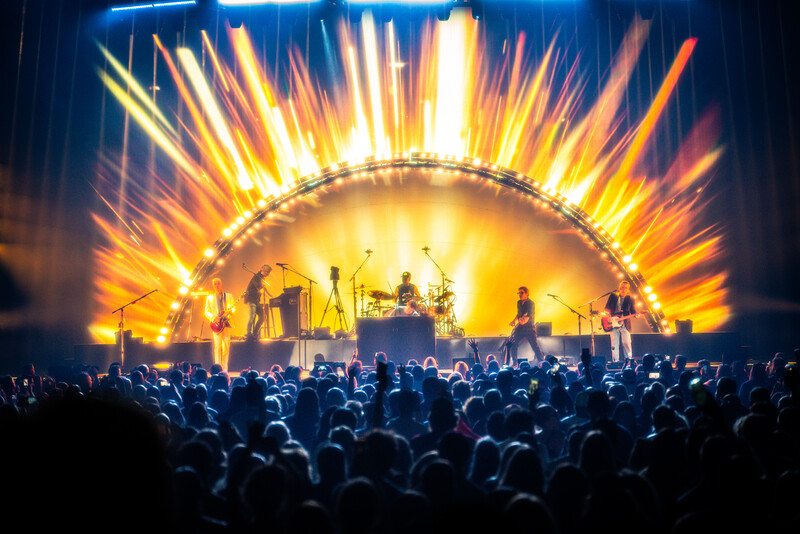
Photo: Jim Trocchio
LOS ANGELES – Back in 1975, two New York inventors came up with the idea of creating a ring that changed colors depending on the wearer’s mood. Technically, crystals in the ring’s stone were responding to fluctuations in body temperature and other physiological changes, but no matter, the evocative jewelry became an instant success, and is still wildly popular today. And why not? Moods, those ever present echoes of emotions, influence everything about us, from how we relate to others to how we see ourselves. Not to mention, they’re also the defining language of our dreams.
The redolent power of the iconic mood ring made it the perfect metaphor for Matchbox Twenty’s “Slow Dream Tour”, which recently concluded its 54-show run at Chicago’s Hollywood Casino Amphitheatre. The Playground design studio evoked images of the emotive cultural icon with a large inflatable semi circle that arches over the upstage deck and is backed by a massive video wall.
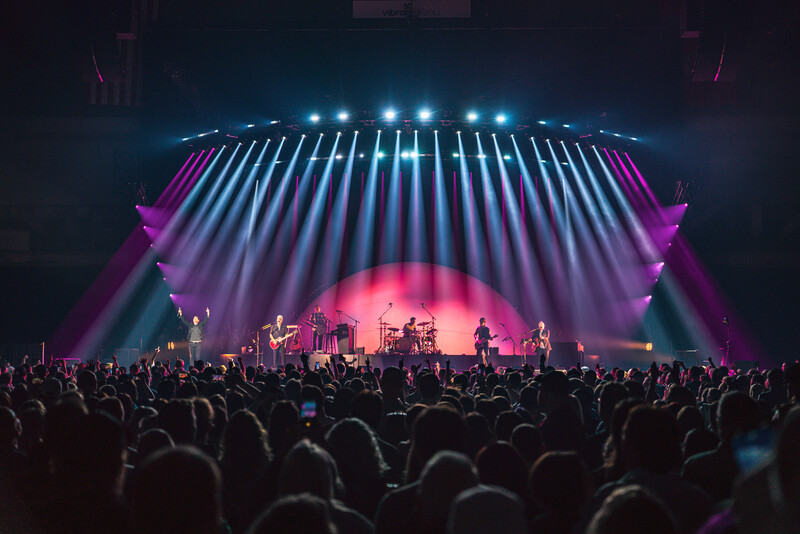
Photo: Jim Trocchio
An array of images from retro clips to abstract patterns displayed on the video screen, is suggestive of the dreamy, translucent look of a mood ring. Accenting the 3D quality of this “ring” is a collection of lighting fixtures, including the CHAUVET Professional Maverick Force 2 Profile, arranged along angled stage left and stage right horizontal truss structures.
“Things that felt important to us were that the show feel minimalist and architectural. It had to exist as an environment in which the band lived in. The sphere gave us the environment, and the trussing gave us the minimalism. That together was the architecture,” said Matchbox 20’s guitar player and creative director Paul Doucette, who worked closely with production designers Sooner Routhier and Curtis Adams of The Playground. “At the same time, it was also important that it all could go away and become intimate.
“The ‘nucleus’ gave us the ability to leave the environment entirely for a moment and enter a new world,” continued Doucette. “So, that when we brought the sphere back it felt new again. And finally, the show had to grow and evolve as it moved on. Which is where the wall came in. We feel you have to save something for the middle and for the end that shows people something they haven’t seen yet. But more importantly feel something they have not felt yet.”
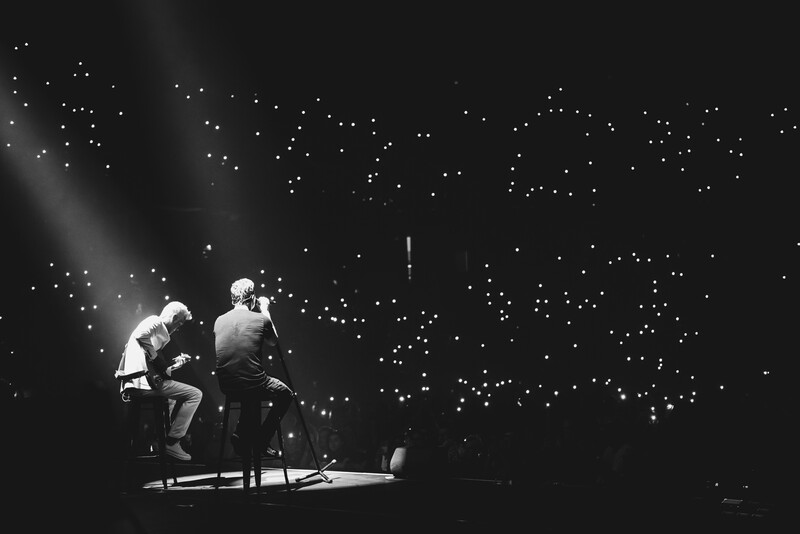
Photo: Jim Trocchio
Elaborating on this vision, Routhier noted: “From the first moment we spoke with the band, we knew this show was going to be special. Unlike in a traditional show, we developed four primary moods (for the three acts plus an encore) in this one. We then knew that we needed to create a visual icon to convey this concept, so the “Mood Sphere’ inspired by the mood ring was born.”
Adams added: “From the first moment we spoke with the band, we knew this show was going to be special. Sooner and I discovered a through line which was a color story. Unlike in a traditional show, we developed four primary moods (for the three acts plus an encore) in this one. We then knew that we needed to create a visual icon to convey this concept, so the “Mood Sphere’ inspired by the mood ring was born.”
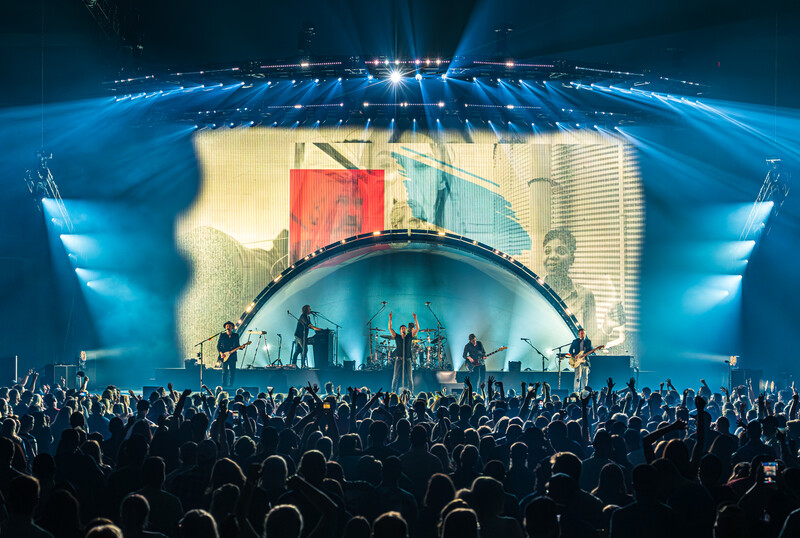
Photo: Jim Trocchio
The production team developed the Mood Sphere with an opaque to luminous gradient, which softens and texturizes the light and color emanating from it. , giving the show’s visuals the appearance of being “dream-like.” The four moods that make up the design are
Joy & Celebration, composed of magenta, pinks, CTO, CTB, orange, muted yellow, yellow, and orange.
Love & Connection — royal blue, teal, light blue, purple, lavender, CTB, emerald, and forest green
Peace & Harmony — salmon, teal, lime green, mint, muted yellow, and daisy yellow.
Nostalgia – magenta, purple, salmon, peach, CTO, pale yellow, and yellow.
Contributing to this colorful aura were the 28 Maverick Force 2 Profile fixtures, positioned on overhead truss as well as the angled side structures. Like the rest of the lighting and video rig, these units were supplied by Solotech.
“They were one of the main workhorses in the rig,” Routhier said of the fixture. “Our associate lighting designer and programmer, Nick Van Nostrand and lighting director Fraser MacKeen cued the Mavericks to create a variety of looks to go along with the music.”
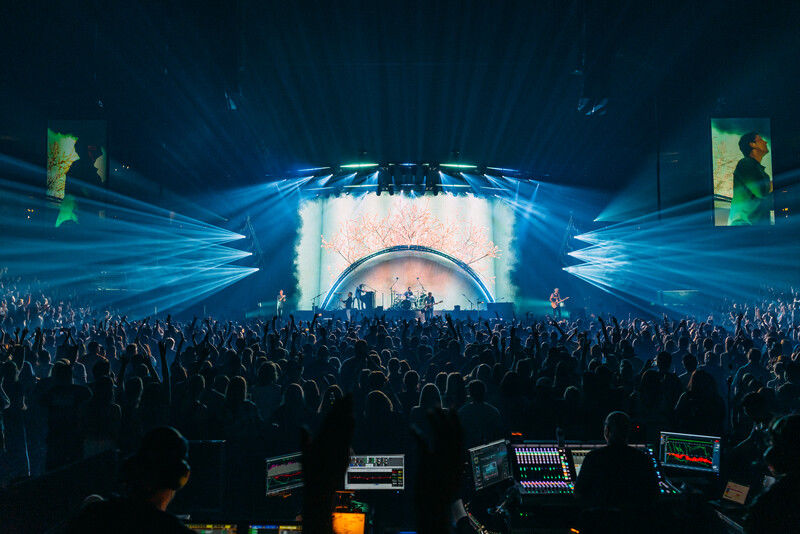
Photo: Jim Trocchio
The deeply ambient video images that complimented the Mood Sphere were developed by content creator Raw Cereal, and run by video programmer Joshua Stuart. The Raw Cereal team of Anders Rahm, Grant Draper, and Cort Lawrence said they followed the production designers’ vision to “build imagery that was abstract, while following the storyline of our collective mood ring.”
Doing this helped the Raw Cereal team narrow down their focus to color and emotion. “The sphere allowed us to think outside of normal boundaries of screens and live within a fun new structure, overall building an art piece instead of boxes of video,” they recounted. “We saw that this approach helped the lighting come to life in a big way, not being overpowered by video.”
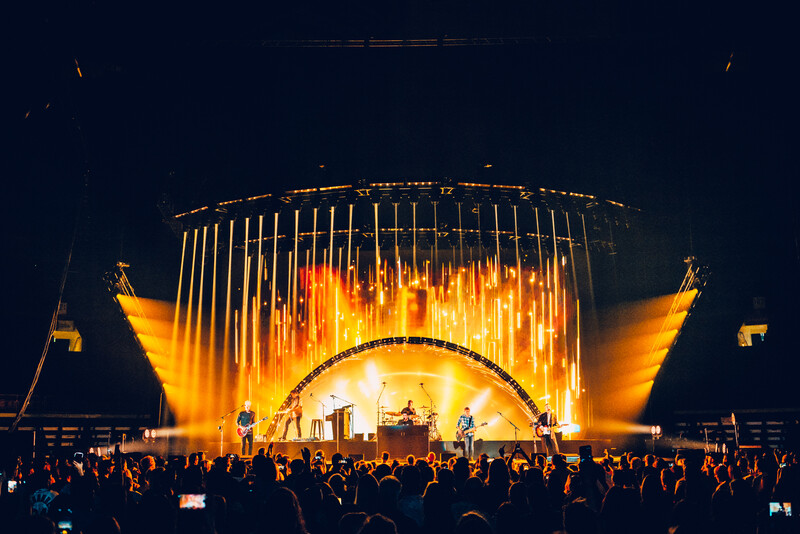
Photo: Jim Trocchio
Looking back on the genesis of the show, Doucette, a founding member of Matchbox 20, described how its various forces blended to form a harmonious creation, which possessed an emotional power that not only affected the audience, but also the band a production team. “Our view of a show is that just like the structure of a song or a film, it is very much a story you are telling an audience. It’s a journey and our job is to be the guides.
“The moods gave us a structure to work within to do that. It starts with the set list obviously. How we want the flow to go,” continued Doucette. “We knew we wanted to start with joy and celebration to invite the crowd in and end with nostalgia so that they left feeling the 27 years we’ve all spent together. The rest was figuring out the path to get them there. Once we got down to production rehearsals, sometimes we saw that in order to get us there, we had to break away from the mood structure slightly. But having that structure gave us a box to work in, and when we left it, we did so by choice, and not random actions. It felt intentional. And we think people felt that — even when it wasn’t obvious. Sooner, Curtis, the Playground team and the Raw Cereal guys brought that intention tenfold. Without a doubt some of my favorite group of humans I have ever worked with on a show.”
Photo: Jim Trocchio